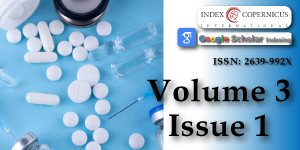Screening of antibiotic residue in poultry in Kathmandu valley of Nepal: A cross-sectional study
Main Article Content
Abstract
This cross-sectional study was conducted to screen the presence of antibiotic residue in poultry. A total of 60 samples (30 Muscle and 30 Liver) were taken from local meat shops from different parts of Kathmandu valley. Disc assay method was used. Escherichia coli (ATCC 25922) and Staphylococcus aureusi (ATCC 25923) were used as test organisms. The results revealed 8 positive samples (which is 13%). Among 30 Liver samples, 3 showed positive result, while only 2 muscle sample indicated positive result. Muscle has the highest percentage of positive results than liver. For S. aureus showed greater percentage of positive results than that of E. coli. The presence of antibiotic residue and its many pathological effects to public health demands the strict rules and regulations as well as surveillance from the concerned authorities.
Article Details
Copyright (c) 2019 Sapkota R, et al.

This work is licensed under a Creative Commons Attribution 4.0 International License.
Ezenduka EV, Oboegbulem SI, Nwanta JA. Rapid detection of antimicrobial residues in poultry: A consequence of non-prudent use of antimicrobials. Health. 2014; 6: 149-152.
Nisha AR. Antibiotic Residue- A Global Hazard. Veterinary World. 2008; 1: 375-377.
Health AP. Antibiotic Use in Animal Agriculture Is Safe and Necessary. 2011; 531-541.
Wise R. Antimicrobial resistance: Priorities for action. J Antimicrob Chemother. 2002; 49: 585-586. PubMed: https://www.ncbi.nlm.nih.gov/pubmed/11909829
Karmi M. Detection and presumptive identification of antibiotic residues in poultry meat by using FPT. Global Journal of Pharmacology. 2014; 8: 160–165.
Hakem A, Titouche Y, Houali K, Yabrir B, Malki O, et al. Screening of Antibiotics Residues in Poultry Meat by Microbiological Methods. J Chemical Information and Modeling. 2013; 53: 1689-1699.
Mund MD, Khan UH, Tahir U, Mustafa BE, Fayyaz A. Antimicrobial drug residues in poultry products and implications on public health: A review. International Journal of Food Properties. 2017; 20: 1433-1446.
Veterinarian GG. Assessment of Some Antibiotics Residues in Broiler. 2018.
Sarker YA, Hasan MM, Paul TK, Rashid SZ, Alam MN, et al. Screening of antibiotic residues in chicken meat in Bangladesh by thin layer chromatography. Journal of Advanced Veterinary and Animal Research. 2018; 5.
Tadesse T, Tadesse T. Public Health Impacts of Antibiotic Residues in Foods of Animal Origin: A Review. 2017; 7: 6-11.
Thapaliya M, Karki TB, Sedai D. Sulfonamides and Penicillin Residue in Market Milk. 2013; 8: 60–64.
Pikkemaat MG. Microbial screening methods for detection of antibiotic residues in slaughter animals. Analytical and Bioanalytical Chemistry. 2009; 395: 893-905. PubMed: https://www.ncbi.nlm.nih.gov/pubmed/19484227
Raut R, Mandal RK, Kaphle K, Pant D, Nepali S, et al. Assessment of Antibiotic Residues in the Marketed Meat of Kailali and Kavre of Nepal. International Journal of Applied Sciences and Biotechnology. 2017; 5: 386.
Ezenduka EV, Oboegbulem SI, Nwanta JA. Rapid detection of antimicrobial residues in poultry: A consequence of non-prudent use of antimicrobials. Health. 2014; 6: 149-152.
Elnasri A, Salman M, Rade SA, El Mohammed, Kolo B, Geidam, YA, et al. Screening of Antibiotic Residues in Poultry Liver, Kidney and Muscle in Khartoum State, Sudan Sample collection. Bas J Vet Res. 2014; 14: 43–51.

